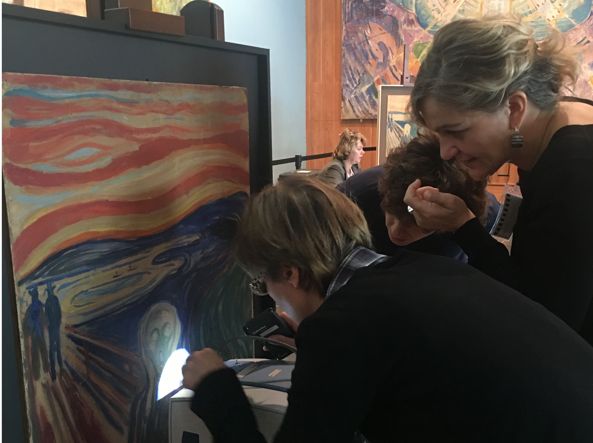
Integrated investigations to definitively save The Scream
In recent years degradation of colours has severely limited the choices of the Munch Museum in Oslo, reluctant to exhibit The Scream by Edvard Munch in the belief that light was at the base of the degradation.
But a team led by CNR ( National Research Council of Italy) has carried out a complex analysis to shed light on the painting and the outcome has been the real problem was not the light but humidity. An important detail, because for a museum it is easier to adjust the conditions of environmental humidity than to control the exposure to light.
Deterioration, as Letizia Monico researcher at CNR of Perugia explains, it is also due to the materials used, especially the cadmium yellows for the clouds. “The artist – says the researcher – has mixed binders, such as tempera, oil and pastel with synthetic pigments”.
The effect was brilliant, but unfortunately, the combination of different materials made the analysis difficult. Not only. Vintage photographs testify that Munch worked in the open air and that he left the paintings exposed to the sun and residues brought by the wind. This further complicated the team’s search.
Curiosity: “The study was integrated with investigations on artificially aged laboratory pictorial specimens, prepared using a historical powder and a tube of cadmium yellow oil that belonged to Munch himself”, says Letizia Monico.
All of that thanks to the non-invasive spectroscopy methods of the European Molab platform (funded by the European Commission in the Iperion-Ch project), a mobile laboratory coordinated by Costanza Miliani currently Director of the CNR-ISPC ( Institute of Heritage Science).
Further analysis has been carried out at the European synchrotron radiation facility in Grenoble, France, by using X-ray sources on micro-fragments taken from the painting.
The study, published in “Science Advances”, not only reported the fading of the clouds. “In the lake area, the dense and opaque strokes of cadmium yellow show a tendency to fall apart,” adds Monico, who started working on the “Scream” in 2017. “Now it will be easier for the museum to exhibit the painting, guaranteeing exposure to relative humidity levels not higher than about 45% and proper lighting”.
But the research on Munch does not stop at Munch: just think of how many other artists – more or less coeval – have used yellow cadmium sulfide pigments, “like Henri Matisse, Vincent van Gogh and James Ensor”, points out Costanza Miliani.
Here the full article (in Italian )
